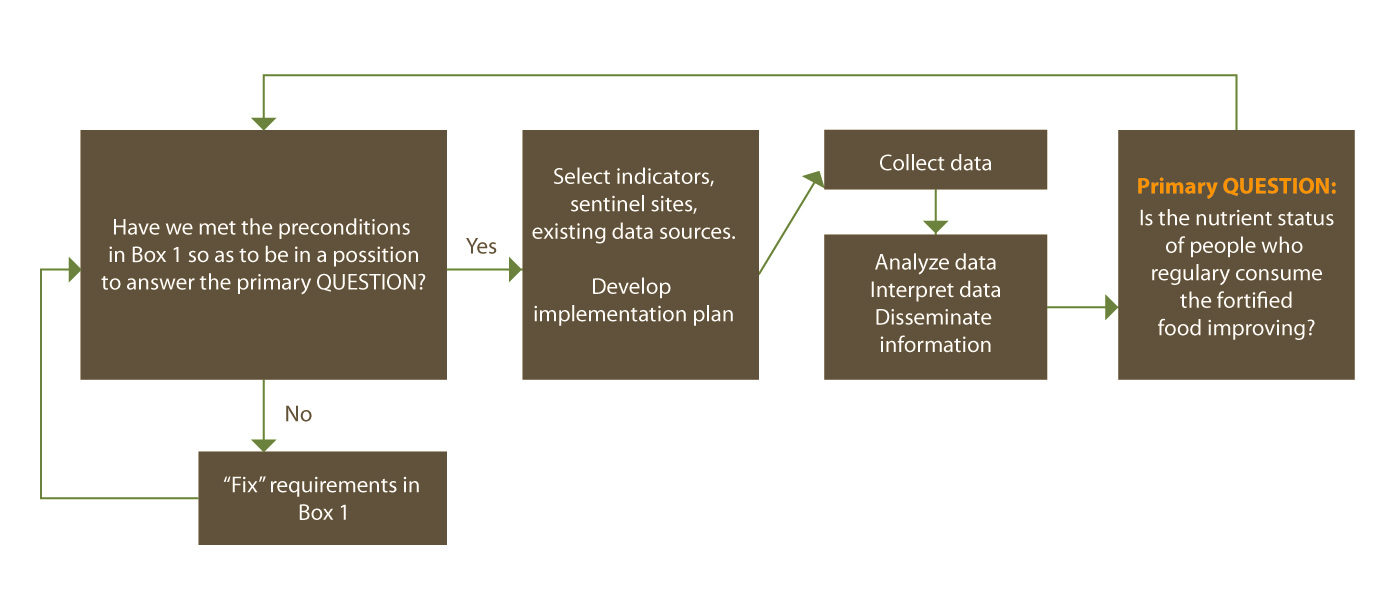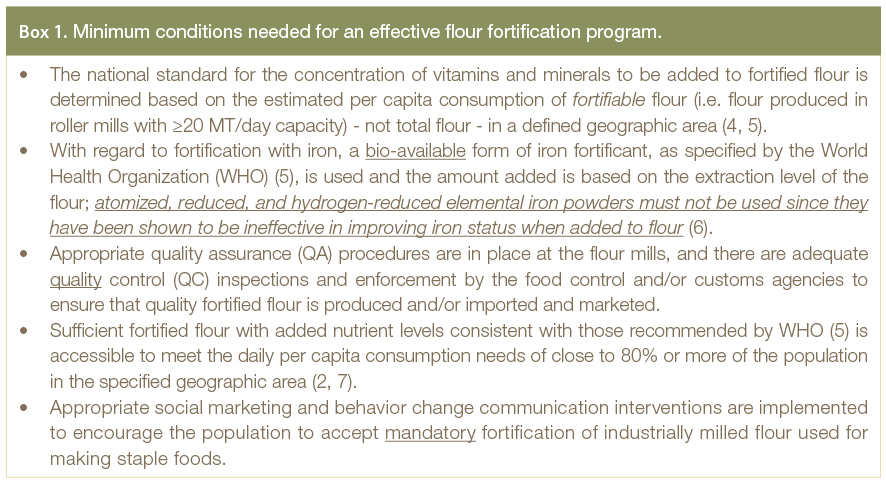FORTIMAS: An Approach for Tracking the Population Coverage and Impact of a Flour Fortification Program
How to use FORTIMAS?
The primary aim of the guide is to propose a population-level data collection approach to help answer the question, “is the micronutrient status of those who regularly consume sufficient quality fortified flour improving?”. During the planning stages of FORTIMAS, it may be useful to “work backwards” from the ultimate aim and review the issues that need to be addressed to achieve it. Flow Diagram 1 (see below) illustrates this approach. Also, keep in mind that Box 1 (see below) lists the essential preconditions for an effective flour fortification program that must be met before embarking on collecting primary data or using existing data to track the population coverage and impact of the intervention.
If you are new to the FORTIMAS approach, read the entire document, including the Preface. When linking the flow diagram to the guide, please note that Chapter 4 (Sections IV, V, and VI) describes data collection, analysis, interpretation and dissemination. Chapter 3 (Section I and Table 4) lists potential indicators to track. Chapters 2 and 3 (Sections II to IV) discuss the selection and use of sentinel sites and data collection points to collect population-level data. Chapter 3 (Sections V and VI), and Chapter 4 (Section VII) as well as several annexes assist in developing the FORTIMAS implementation plan.
Download the full document
- Preface
- Acknowledgements
- Chapter 1: Background
- Chapter 2: Approach to FORTIMAS Data Collection
- Chapter 3: Planning and Implementing a Sentinel Site Flour Fortification Program Monitoring and Surveillance System
- Chapter 4: Additional Considerations for Implementing a Sustained Flour Fortification Program Monitoring and Surveillance System
- Appendix A – Example of a sentinel clinic data collection form
- Appendix B – Example of a household flour information form to be completed by sentinel school students
- Appendix C – Semi-quantitative spot test for iron as ferrous sulfate, ferrous fumarate, or electrolytic iron
- Appendix D – Semi-quantitative spot test for iron as Sodium Iron EDTA: Adaptation of the AACC 40-40 spot test
- Appendix E – Example of a flour fortificant test log-sheet for sentinel school teachers
Interactive charts for your use:
- Decision Tree
- National Situation mapping worksheet
- Tool to estimate the number of days to recruit in clinic
Birth Defects surveillance: A manual for program managers
A new manual was published by the World Health Organization along with the National Center on Birth Defects and Developmental Disabilities from the US Centers for Disease Control and Prevention (CDC), and the International Clearinghouse for Birth Defects Surveillance and Research (ICBDSR). Using the manual will help a country expand an existing hospital-based surveillance program into a population-based program. It can also be used in a country that is beginning a population-based registry. Read more



